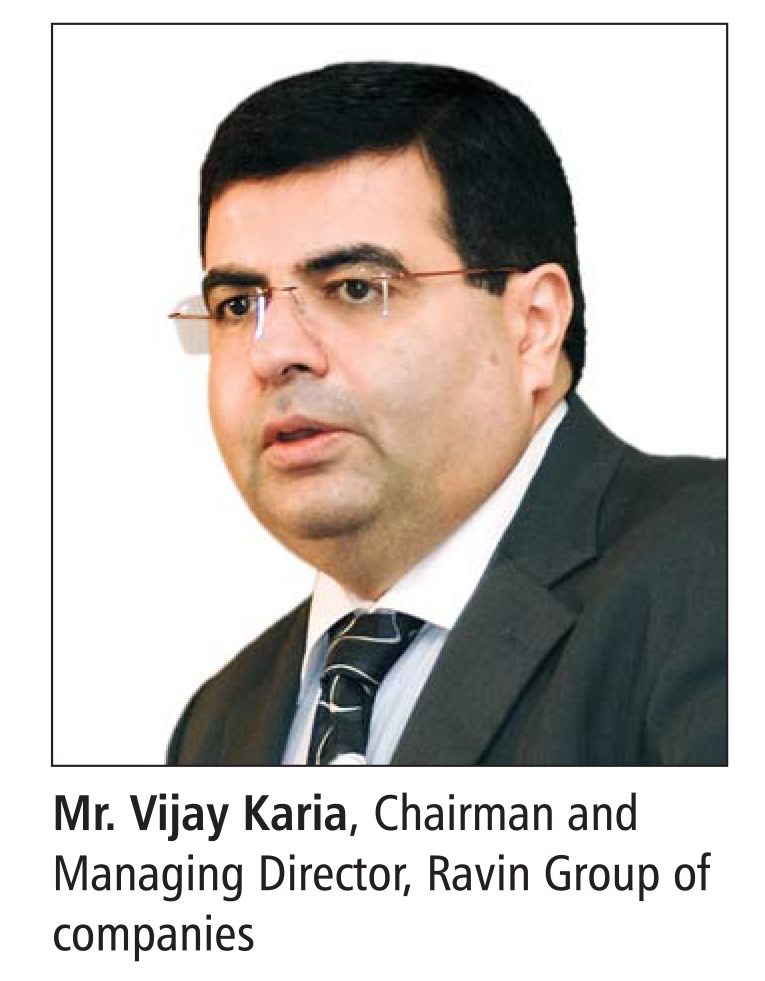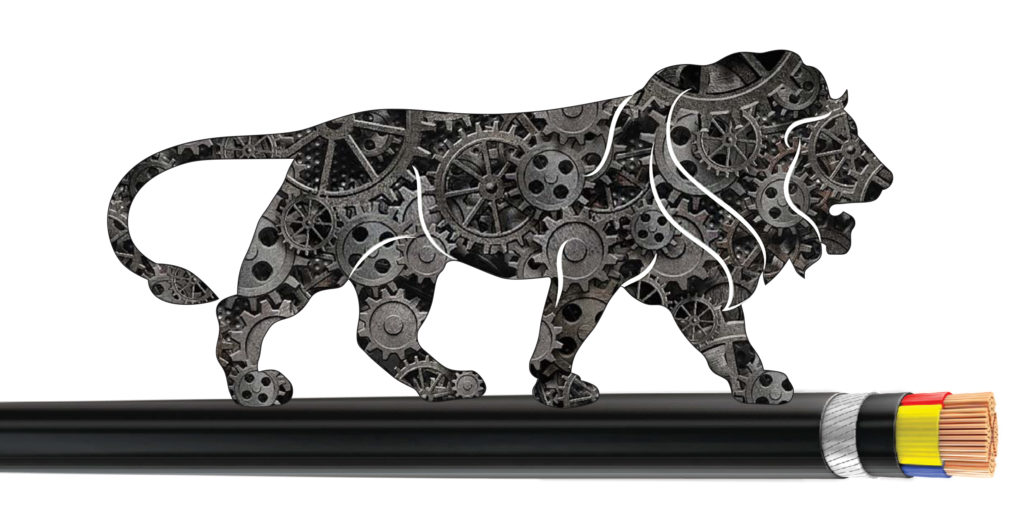Efforts to spruce up indigenous manufacturing potential are lauded by every industry. Does the Indian wire and cable industry take the same stand?
Make in India, envisaged by the Govt. of India, aims to build and revamp the manufacturing credentials of the country. The program may be considered as the first concrete pronouncement of the government’s will to create credible manufacturing capacity indigenously. Of course, Make in India takes into account all the factors responsible for the robust growth of manufacturing sector viz. facilitating investment, foster innovation, enhancing skill development, protecting intellectual property and building best-in-class infrastructure.
Amidst all these ambitious projects and sub-projects, we are yet to fathom the consequences of the program directly and indirectly on the wire and cable manufacturing. Wire & Cable India magazine, in order to assess the varied assessment of the program and its impending impact, asked few questions from industry representatives. Here are what they say:
 Wire & Cable India: Does ‘Make in India’ ring a bell for wire and cable industry in terms of giving impetus to manufacturing growth rate?
Wire & Cable India: Does ‘Make in India’ ring a bell for wire and cable industry in terms of giving impetus to manufacturing growth rate?
Nikhil Gupta: In India, manufacturing sector contributes to 18 percent of GDP; in China, it is 51 percent . The gist of Make in India is to attract foreign capital in manufacturing sector through assurances of subsidies, faster project clearances, and tax benefits. We can expect higher growth rate for cables’ market as these projects come under execution. This would be welcome relief for our industry which is reeling under capacity utilizations of ~55 percent.
WCI: The program targets various sectors for unleashing their manufacturing potentials. Do you find a mention of wire and cable industry in the specified sectors or somewhere else in the detailed document of the program?
NG: We are part of the Transmission and Distribution Industry which has been targeted under broader Electrical Machinery sector.
WCI: Would the wire and cable industry be benefited directly from the program via incentive and specific policy in favor of it, or would it be leveraging the infrastructure growth envisaged by the program for its eventual benefit?
NG: All sectors in the program will need power to run which will go beyond the planned addition of 88 GW by FY17. In addition to this, current inefficient distribution systems need to be improved which is targeted in Power Ministry’s Integrated Power Develop-ment Scheme (IPDS). Thus, we would benefit from overall infrastructure growth needed for supporting the program.
WCI: How do you think the National Manufacturing Policy of the Government will be instrumental in enhancing the global competitiveness of the manufacturing sector in general and wire and cable manufacturing in particular?
NG: To be competitive globally, we must be able to develop local talent, use cutting edge technology, and adopt best practices in manufacturing from around the world. What NMP does very well is to lay out policies and procedures for the same clearly. What it also needs to do is to improve the perception of ‘Made in India’ abroad. Today, India accounts of less than 1 percent of USD 125 billion global trade in cables although we account for ~ 6 percent of world GDP. Thus, the wire and cable industry in India will do well if it is able to compete in developed markets abroad.
WCI: The National Investment and Manufacturing Zones are being conceived as giant industrial green-field townships to promote world-class manufacturing activities. Would wire and cable industry be benefited by this?
NG: Such industrial hubs definitely help in quickly setting up plants as skilled people are readily available and connectivity issues like uninterrupted power, roads are taken care of. Though, for any large scale investment in the wire and cable manufacturing to happen, demand must pick up significantly.
 Wire & Cable India: Does ‘Make in India’ ring a bell for wire and cable industry in terms of giving impetus to manufacturing growth rate?
Wire & Cable India: Does ‘Make in India’ ring a bell for wire and cable industry in terms of giving impetus to manufacturing growth rate?
Vijay Karia: ‘Make in India’ sure rings a bell in terms of a good omen for the entire industry, especially the wire and cable industry. For the wire and cable industry warning bells were being sounded for last many years, with increase in imports and with the industry struggling.
However, knowing the nature of the product and the way ‘Make in India’ can be manipulated, the interpretation of ‘Make in India’ has to be read as “Make Completely In India”. Only then will this give an impetus in the industry.
WCI: The program targets various sectors for unleashing their manufacturing potentials. Do you find a mention of wire and cable industry in the specified sectors or somewhere else in the detailed document of the program?
VK: My reading of this situation and of the Government’s objectives is that the Government wants the manufacturing segment to grow. It does not matter whether an individual segment is part of a specific sector or not. It does seem that the Cable industry is not a part of the specified sector. However, one needs to realize: a)the wire and cable industry is the largest segment of the electrical industry, b) for the country to grow, the reach of electricity and the per capita consumption of electricity has to grow across the space of the entire country, c) it would not be viable to rely on imports for wires and cables for the growth of the country, d) wires and cables are lifeline of the industry and hence need to grow at a very healthy rate for a country as a whole to grow.
WCI: Would the wire and cable industry be benefited directly from the program via incentive and specific policy in favor of it, or would it be leveraging the infra-structure growth envisaged by the program for its eventual benefit?
VK: The government does not seem to be inclined towards any kind of incentives, and incentives and specific policies can be only in areas of overall national interest and under-developed area, or areas of high technology where technology is not available in India. Wire and cable industry does not fall in any of these categories and it would have to leverage its growth on basis of infrastructure growth. At the same time, we would have to upgrade ourselves in terms of manufacturing techniques and technologies and make it an extremely attractive and viable proposition for the customers to buy products locally. You have to understand fully well that any area which has subsidies ultimately falls ill after a certain period of time, as complacency sets in.
WCI: How do you think the National Manufacturing Policy of the Government will be instrumental in enhancing the global competitiveness of the manufacturing sector in general and wire and cable manufacturing in particular?
VK: The cost of doing business in India is much higher than in other competitor countries. What we require here are a) simplification of processes, b) availability of cheaper finance for infrastructure, c) huge reduction in cost of administration and compliances in India, where we spend more time and money in filing various tax returns and submitting data to the government than we spend on business itself, d) the inward and non-business friendly export policies and licence raj that we are yet following has to be changed urgently. For example, why should an advance licence, which is taken for export orders, have a restriction in the time period for import of materials? Why should there be a restriction on imports if exports have already taken place? Why should there be so many agencies and licences to cope with for both local manufacturing as well as exports?
No doubt the current government has inherited a lot of ills from the previous government, but now they need to put their heads together and bring in big ticket reforms especially for MSMEs.
This kind of approach will be instrumental in enhancing the global competitiveness of the manufacturing sector in general. No doubt that the government is trying to reach out and clean up the mess and is also trying to explain its actions to the industry.
For example, I have been invited to be a part of the CEO Delegation accompanying the PM to Hannover Messe 2015. As a prelude to this visit, I have received detailed notes from the Ministry of Commerce and Industry about the changes that the government has made in simplifying its policies. And the government is taking pains to explain this through the industry to the various investors outside the country. This attempt of the government to work hand-in-hand with the industry is a very welcome and refreshing change from the past. After all global competitiveness cannot come through any manufacturing policies of the government, but can only come through a partnership approach where government and industry both work hand-in-hand for a better tomorrow.
WCI: The National Investment and Manufacturing Zones are being conceived as giant industrial Greenfield townships to promote world-class manufacturing activities. Would wire and cable industry be benefited by this?
VK: The national investment and manufacturing zones would no doubt benefit industry as also the wire and cable industry, as such zones where a particular set of products are made in particular areas would lead to not only better infrastructure, but lower costs due to improved logistics and proximity. One of the direct results of these kinds of zones will mean that the end industry as well as ancillaries would all come up in close proximity of each other thereby reducing costs. Classic example of this is the automobile industry. However, we have to realize that such zones will take a few years or may be a few decades to build and so currently the industry would have to go with its own model.
 Wire & Cable India: Does ‘Make in India’ ring a bell for wire and cable industry in terms of giving impetus to manufacturing growth rate?
Wire & Cable India: Does ‘Make in India’ ring a bell for wire and cable industry in terms of giving impetus to manufacturing growth rate?
Marc Jarrault: Over the last few decades, the share of Indian manufacturing sector in the country’s GDP has remained stagnant. The ‘Make in India’ campaign did give the much needed push to the manufacturing sector. The manufacturing sector continued to improve, fuelled by accelerated growth of output. With India already making its presence as one of the fastest growing economies of the world, the campaign will indirectly open additional revenue avenues for the cable and wire industry through private players entering the market. With 40 percent of the electrical industry composed of wire and cable industry, private players would play an important role here. We could see an increase in the core competency of the industry which will encourage innovation, latest technology and enhancement of skill development.
WCI: The program targets various sectors for unleashing their manufacturing potentials. Do you find a mention of wire and cable industry in the specified sectors or somewhere else in the detailed document of the program?
MJ: While the wire and cable industry does not get a direct mention in ‘Make in India’ campaign, the program does have an impact on the industry. The wire and cable industry focuses on supplying cables for specific applications pertaining to various industries like power, oil and gas, electrical, cement, steel, and construction among others. Given the focus of the program is to give impetus to these industries, the wire and cable industry will indirectly have the opportunity to benefit from the ‘Make in India’ campaign.
WCI: Would the wire and cable industry be benefited directly from the program via incentive and specific policy in favor of it, or would it be leveraging the infra-structure growth envisaged by the program for its eventual benefit?
MJ: As mentioned earlier, the wire and cable industry will indirectly benefit from the campaign. It will leverage the infrastructure growth envisaged by the program. ‘Make in India’ program is expec-ted to help manufacturing units cut costs as well as access credit and skilled manpower. The cut on customs duty on 22 items will make it cheaper for Indian companies to import parts to manufacture products. The inverted duty struc-ture is being finally addressed with the removal of special additional duty on all components in the manufacturing unit.
WCI: How do you think the National Manufacturing Policy of the Government will be instrumental in enhancing the global competitive-ness of the manufacturing sector in general and wire and cable manufacturing in particular?
MJ: The Manufacturing share in India’s GDP has been stranded at 16 percent since decades. The introduction of national manufacturing policy aims to improve the share of manufacturing in the country’s GDP from mere 16 percent to 22 percent by the year 2022. The establishment of National Invest-ment and Manufacturing Zones (NIMZ) equipped with world-class infrastructure developed in partnership with the private sector; relaxation of environmental regulations which are time consuming can help the sector’s growth.
For wire and cable manufacturing, private player’s participation needs to be encouraged. The easy exit policy and single window clearance in zones; flexi-ble labor laws and simplified & expeditious exit mechanism needs to be in place in order to enhance the global competitiveness of the manufacturing sector.
WCI: The National Investment and Manufacturing Zones are being conceived as giant industrial Greenfield townships to promote world-class manufacturing activities. Would wire and cable industry be benefited by this?
MJ: The NIMZ are being conceived as giant Greenfield townships to promote world class manufacturing activities which will have access to infrastructure like rails/roads, ports/airports and tele-com infrastructure. With a minimum size of 50 sq kms of area envisaged the processing area @ 30 percent it would give the right impetus to the above focus sectors to set up shop. This will give Lapp India tremendous opportunity especially in core verticals like Textiles, food processing, machine tools, heavy electrical equip-ment, heavy transport, earth moving/ mining apart from infrastructure projects like shipping, solar, airport, ports etc.





